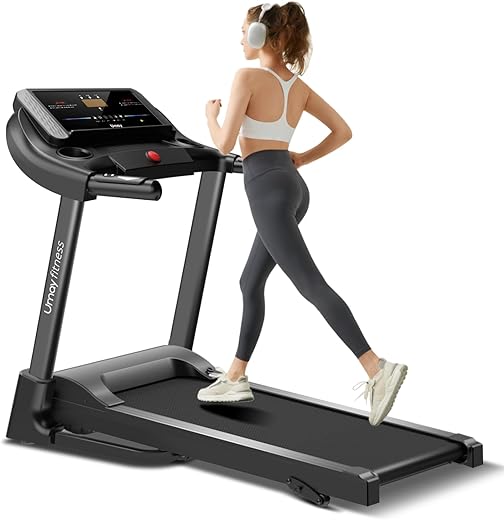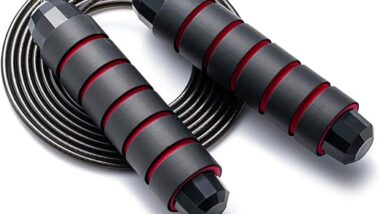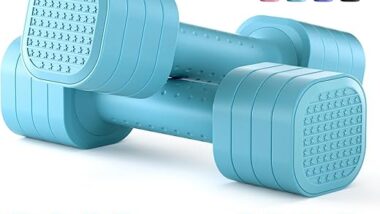As someone who values the convenience of a home workout, I know how important it is to keep my treadmill in top shape. There’s nothing worse than planning a workout only to find that my machine isn’t functioning properly. Whether you’re new to treadmill ownership or looking to enhance your maintenance routine, I understand the struggle of wanting to maximize your investment. In this post, I’ll share essential tips and practices to help you maintain your treadmill, ensuring it serves you well for years to come. Let’s dive in and keep our fitness goals on track!
Step-by-Step Guide to Lubricating Your Treadmill Belt
Understanding Your Treadmill
Before diving into maintenance tips, it’s crucial to understand the various components of your treadmill. This knowledge will empower you to identify specific maintenance needs and make informed decisions about your equipment. Here, we’ll explore the different types of treadmills—manual vs. motorized—and break down their key parts, including the belt, deck, motor, and console.
Types of Treadmills: Manual vs. Motorized
Manual Treadmills
Manual treadmills rely on your own movement to power the belt. This means there is no motor involved, making them typically lighter and more portable. They are often more affordable, but they require more effort to use, which can be both a benefit and a drawback.
Examples of Manual Treadmills:
- ProForm 505 CST: This model provides a basic experience with a folding design that makes it easy to store.
- Sunny Health & Fitness SF-T1407M: A very affordable and compact option, great for beginners or those with limited space.
Benefits of Manual Treadmills:
- Lower price point
- No electricity required
- Can provide a more intense workout
Motorized Treadmills
Motorized treadmills, as the name suggests, are powered by electric motors that drive the belt. These models typically come with a variety of features such as pre-programmed workouts, adjustable speeds, and incline settings, making them suitable for users of all fitness levels.
Examples of Motorized Treadmills:
- NordicTrack Commercial 1750: This advanced treadmill features a powerful motor, iFit compatibility, and an adjustable incline.
- Sole F80: A durable treadmill known for its solid construction and user-friendly interface, ideal for home gyms.
Benefits of Motorized Treadmills:
- More features and settings
- Consistent belt speed
- Generally easier on joints due to cushioning
Key Components of a Treadmill
Understanding the specific components of your treadmill will help you recognize maintenance needs and troubleshoot issues more effectively. Here are the main parts you’ll encounter:
1. Treadmill Belt
The belt is the surface you walk or run on, and it can wear down over time due to friction and usage. Most treadmill belts should be lubricated regularly to ensure a smooth operation.
Maintenance Tips:
- Check for wear and tear; replace if frayed.
- Lubricate every 3-6 months, depending on usage. For example, using silicone-based lubricant on the ProForm 505 CST can extend the life of the belt.
2. Treadmill Deck
The deck serves as the foundation for the treadmill belt and provides cushioning to your joints. Over time, the deck can lose its integrity, leading to a less comfortable workout experience.
Maintenance Tips:
- Inspect the deck for cracks or damage.
- Clean the deck to remove debris that can cause friction.
3. Motor
The motor powers the treadmill and is a critical component for motorized models. If your treadmill is making unusual noises or the belt isn’t moving smoothly, the motor may need attention.
Maintenance Tips:
- Ensure the motor is dust-free; use a vacuum to clean it regularly.
- Check the motor’s alignment and lubricate if necessary.
4. Console
The console is the control center of your treadmill, displaying important information like time, distance, speed, and heart rate. A malfunctioning console can hinder your workout by not providing accurate data.
Maintenance Tips:
- Keep the console clean and free of moisture.
- Check connections for any loose wires or issues.
Quick Reference Table: Comparison of Manual vs. Motorized Treadmills
| Feature | Manual Treadmills | Motorized Treadmills |
|---|---|---|
| Power Source | Human-powered | Electric motor |
| Cost | Generally lower | Generally higher |
| Workout Variety | Limited to walking/running speeds | Multiple speeds and incline options |
| Portability | More portable | Heavier, less portable |
| User Experience | Can be more challenging | Easier to use with preset programs |
Understanding these components and their maintenance requirements can significantly enhance the longevity of your treadmill and improve your workout experience. By ensuring that each part is functioning optimally, you can enjoy a smoother, more effective workout every time you step on your treadmill.
Regular Cleaning and Inspection
Maintaining your treadmill through regular cleaning and inspection is essential for ensuring optimal performance and longevity. Dirt, sweat, and dust can accumulate over time, leading to wear and tear that could impact your workout experience. Here’s a step-by-step guide to help you keep your treadmill in tip-top shape.
Step-by-Step Cleaning Guide
1. Gather Your Cleaning Supplies
Before you begin, collect the necessary cleaning materials. Here’s what you’ll need:
- Microfiber cloths: For wiping down surfaces without scratching.
- Mild detergent: A gentle soap, like Dawn Dish Soap, is ideal.
- Isopropyl alcohol (70%): Great for disinfecting surfaces, especially the console.
- Vacuum with a hose attachment: For removing dust and debris from hard-to-reach areas.
- Treadmill lubricant: Such as the Lifefit Treadmill Lubricant or Pure Silicone Treadmill Lubricant, for maintaining the belt.
2. Cleaning the Treadmill Belt
Cleaning the belt is crucial to prevent slip hazards and ensure smooth operation.
- Unplug the treadmill: Safety first! Always disconnect your treadmill from the power source.
- Lift the belt: Use your hands to gently lift the running belt, exposing the deck underneath.
- Wipe the underside: Use a damp microfiber cloth with mild detergent to clean the deck. Avoid soaking the cloth.
- Check for debris: Inspect for any dust or hair caught beneath the belt, and remove it with a vacuum.
- Lubricate the belt: Apply lubricant to the deck according to the manufacturer’s instructions. For example, the ProForm Performance 400i recommends lubrication every 40 hours of use.
3. Cleaning the Console and Frame
The console is where you interact with the machine, so it’s important to keep it clean.
- Wipe down the console: Use a microfiber cloth dampened with isopropyl alcohol to disinfect the console and buttons. Models like the NordicTrack T Series often have sensitive screens, so avoid harsh chemicals.
- Clean the frame: Wipe down the frame with a damp cloth. You can use the same mild detergent for this purpose.
- Inspect cables: Look for any frayed or exposed wires while cleaning. If you find any issues, consult the manufacturer’s guidelines or a professional for repairs.
4. Regular Maintenance Checks
Regular inspections can help you catch potential problems before they escalate.
Key Areas to Inspect:
- Belt tension: Check if the belt is properly aligned and tensioned. For instance, the Sole F85 treadmill has a specific tension adjustment that can be made using an Allen wrench.
- Deck wear: Examine the running deck for any signs of wear. A worn deck can affect performance and should be replaced if necessary.
- Console functionality: Ensure all buttons and displays are fully operational.
- Frame stability: Check that the frame is stable and free from rust or damage.
5. Frequency of Cleaning and Inspection
To keep your treadmill performing well, establish a cleaning and inspection schedule:
- Weekly: Wipe down the console and frame, and clean the belt.
- Monthly: Inspect the belt tension, lubricate if necessary, and vacuum underneath.
- Annually: Conduct a thorough inspection of all parts, including the motor and electronics, and replace components as needed.
Benefits of Regular Cleaning and Inspection
- Improved Functionality: A clean treadmill runs smoother, enhancing your workout experience.
- Increased Longevity: Regular maintenance extends the lifespan of your equipment.
- Safety: Keeping the running surface clean reduces the risk of slips and falls.
| Benefit | Details |
|---|---|
| Improved Functionality | Results in smoother operation and better performance. |
| Increased Longevity | Regular care prevents wear and tear, prolonging the life of your treadmill. |
| Enhanced Safety | Reduces the risk of accidents due to dirt or malfunction. |
By prioritizing regular cleaning and inspection, you’re not just investing in your equipment; you’re also investing in your health and workout success. Keep your treadmill in optimal condition and enjoy the benefits of a well-maintained fitness machine!
Lubrication and Belt Maintenance
Proper lubrication is essential for maintaining the performance and longevity of your treadmill. A well-lubricated treadmill belt reduces friction, minimizes wear and tear, and ensures a smooth running experience. In this section, we will discuss how to identify when your treadmill belt needs lubrication, the types of lubricants to use, and the process for applying them. Additionally, we’ll cover how to check for proper belt tension and alignment, critical factors that contribute to the safe operation of your treadmill.
Identifying the Need for Lubrication
Knowing when to lubricate your treadmill belt is crucial for its maintenance. Here are a few signs that indicate it’s time to apply lubricant:
- Increased Noise: If you notice a squeaking or grinding noise while running, it’s a clear indication that lubrication is needed.
- Belt Slipping: If the belt slips during use, it may be due to insufficient lubrication, causing friction between the belt and the deck.
- Resistance: If you feel that the belt is harder to move or doesn’t glide smoothly, it’s time for lubrication.
Types of Lubricants to Use
Not all lubricants are created equal. Using the wrong type of lubricant can damage your treadmill. Here are some recommended options:
- Silicone-Based Lubricants: These are the most common and are generally recommended for treadmill maintenance. Brands like Lifespan Treadmill Lubricant and ProForm Treadmill Lubricant are excellent choices. They reduce friction and are non-staining, which is crucial for preserving your treadmill’s appearance.
- Petroleum-Based Lubricants: These are less commonly recommended due to the potential damage they can cause to the treadmill belt and deck. However, if your manufacturer specifies a petroleum-based option, it’s essential to follow their recommendations.
Comparison Table: Lubricants for Treadmills
| Type of Lubricant | Recommended Brands | Benefits | Cautions |
|---|---|---|---|
| Silicone-Based | Lifespan, ProForm | Reduces friction, non-staining | Ensure compatibility |
| Petroleum-Based | NordicTrack (if specified) | May offer good lubrication | Can damage belt if used improperly |
Process for Applying Lubricants
Applying lubricant to your treadmill is a straightforward process. Here’s a step-by-step method:
- Turn Off the Treadmill: Always ensure that your treadmill is unplugged before starting any maintenance work.
- Lift the Belt: Gently lift the belt on one side to expose the deck underneath.
- Apply Lubricant: Use a spray bottle or a nozzle applicator to evenly distribute the lubricant along the deck. For instance, if you’re using Lifespan Treadmill Lubricant, follow the instructions on the label for the correct application technique.
- Spread the Lubricant: Walk on the treadmill at a low speed for a few minutes to allow the lubricant to spread evenly across the belt and deck.
- Check for Excess Lubricant: Wipe off any excess lubricant with a clean cloth to prevent it from collecting dust and debris, which can lead to further friction issues.
Checking for Proper Belt Tension and Alignment
Once lubrication is applied, it’s crucial to check the belt’s tension and alignment. Improper belt tension and alignment can lead to serious issues, including injury. Here’s how to do it:
Belt Tension
To check the tension:
- Stand on the sides of the treadmill belt and press down in the center. The belt should move down about 1-2 inches.
- If it moves more than 2 inches, it may be too loose and requires adjustment.
Belt Alignment
To check the alignment:
- Start the treadmill at a low speed.
- Observe the belt as it moves. If it drifts to one side, it needs to be adjusted.
- Most treadmills have adjustment bolts at the back of the deck to help realign the belt. Consult your treadmill’s manual for specific instructions.
Regular Maintenance Schedule
To keep your treadmill in optimal condition, establish a regular maintenance schedule:
- Lubricate the Belt: Every 3-6 months, or more frequently if you use your treadmill daily.
- Check Tension and Alignment: Every month, or as needed based on usage.
- Inspect the Belt for Wear: Regularly check for signs of fraying or cracking.
By maintaining proper lubrication and ensuring that your treadmill belt is correctly tensioned and aligned, you can extend the life of your treadmill and enhance your workout experience.
Ensuring Longevity and Optimal Performance
In conclusion, maintaining my treadmill at home is crucial for its durability and optimal performance. By familiarizing myself with the machine, committing to regular cleaning and inspections, properly lubricating the belt, and staying alert to common problems, I can ensure my treadmill remains in excellent condition. Adhering to these maintenance practices consistently and seeking professional help when necessary will ultimately enhance my workout experience and prolong the life of my equipment.






Has anyone ever had issues with their treadmill belt slipping? I feel like it’s a common problem, and I’m curious about how to fix it!
Belt slipping is definitely a common issue. Usually, it’s just a matter of adjusting the tension. Check your manual for the right method!
I find that using a silicone-based lubricant like 3M Treadmill Lubricant makes a huge difference. Anyone else have thoughts on that?
Totally agree! Silicone-based lubricants are great for reducing friction. Just be careful not to over-lubricate!
I recently started using my NordicTrack T Series Treadmill for HIIT workouts at home, and I love it! Proper maintenance has really helped keep it running smoothly.
Hey, could you expand more on what to look for during the inspection? Like, what specific parts should I be checking regularly?
Great tips! Do you have any specific recommendations for treadmill cleaning products? I’ve heard some can damage the electronics.
Absolutely! I recommend using a gentle, non-abrasive cleaner like Windex or a simple solution of vinegar and water. Just make sure to avoid getting any liquid into the electronics!
What about noise? My treadmill makes a weird sound sometimes. Is this normal or a sign it needs maintenance?
A little noise is normal, but if it sounds more like grinding or squeaking, it might be time for some lubrication or a check-up!
Thanks for the tips! I’ll definitely implement the cleaning suggestions. Any advice for storing the treadmill when not in use?
Great question! If you have a foldable treadmill, make sure to store it upright to save space. Just be sure to wipe it down before folding to avoid dust buildup!